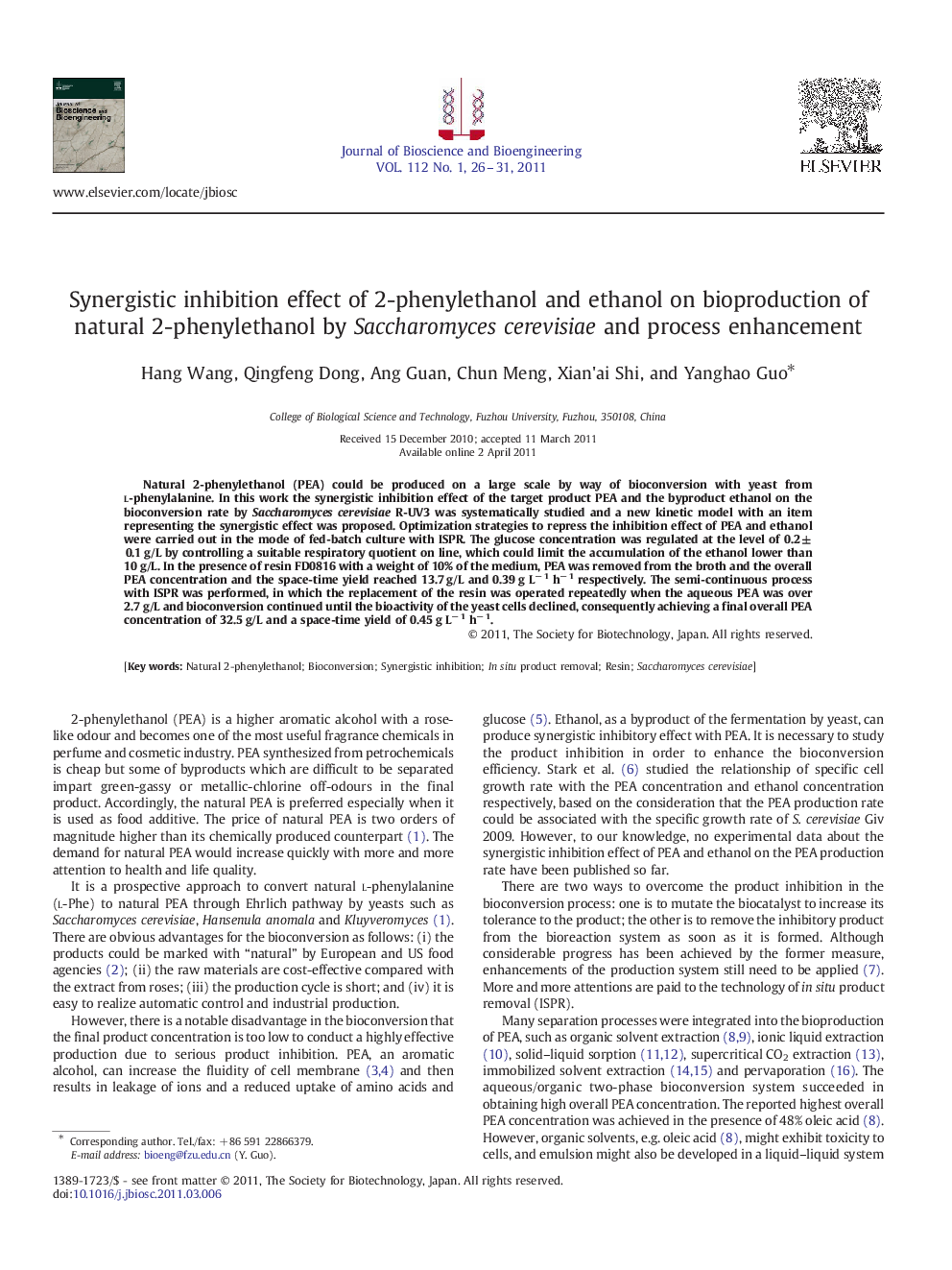| Article ID | Journal | Published Year | Pages | File Type |
|---|---|---|---|---|
| 21181 | Journal of Bioscience and Bioengineering | 2011 | 6 Pages |
Natural 2-phenylethanol (PEA) could be produced on a large scale by way of bioconversion with yeast from l-phenylalanine. In this work the synergistic inhibition effect of the target product PEA and the byproduct ethanol on the bioconversion rate by Saccharomyces cerevisiae R-UV3 was systematically studied and a new kinetic model with an item representing the synergistic effect was proposed. Optimization strategies to repress the inhibition effect of PEA and ethanol were carried out in the mode of fed-batch culture with ISPR. The glucose concentration was regulated at the level of 0.2 ± 0.1 g/L by controlling a suitable respiratory quotient on line, which could limit the accumulation of the ethanol lower than 10 g/L. In the presence of resin FD0816 with a weight of 10% of the medium, PEA was removed from the broth and the overall PEA concentration and the space-time yield reached 13.7 g/L and 0.39 g L− 1 h− 1 respectively. The semi-continuous process with ISPR was performed, in which the replacement of the resin was operated repeatedly when the aqueous PEA was over 2.7 g/L and bioconversion continued until the bioactivity of the yeast cells declined, consequently achieving a final overall PEA concentration of 32.5 g/L and a space-time yield of 0.45 g L− 1 h− 1.
